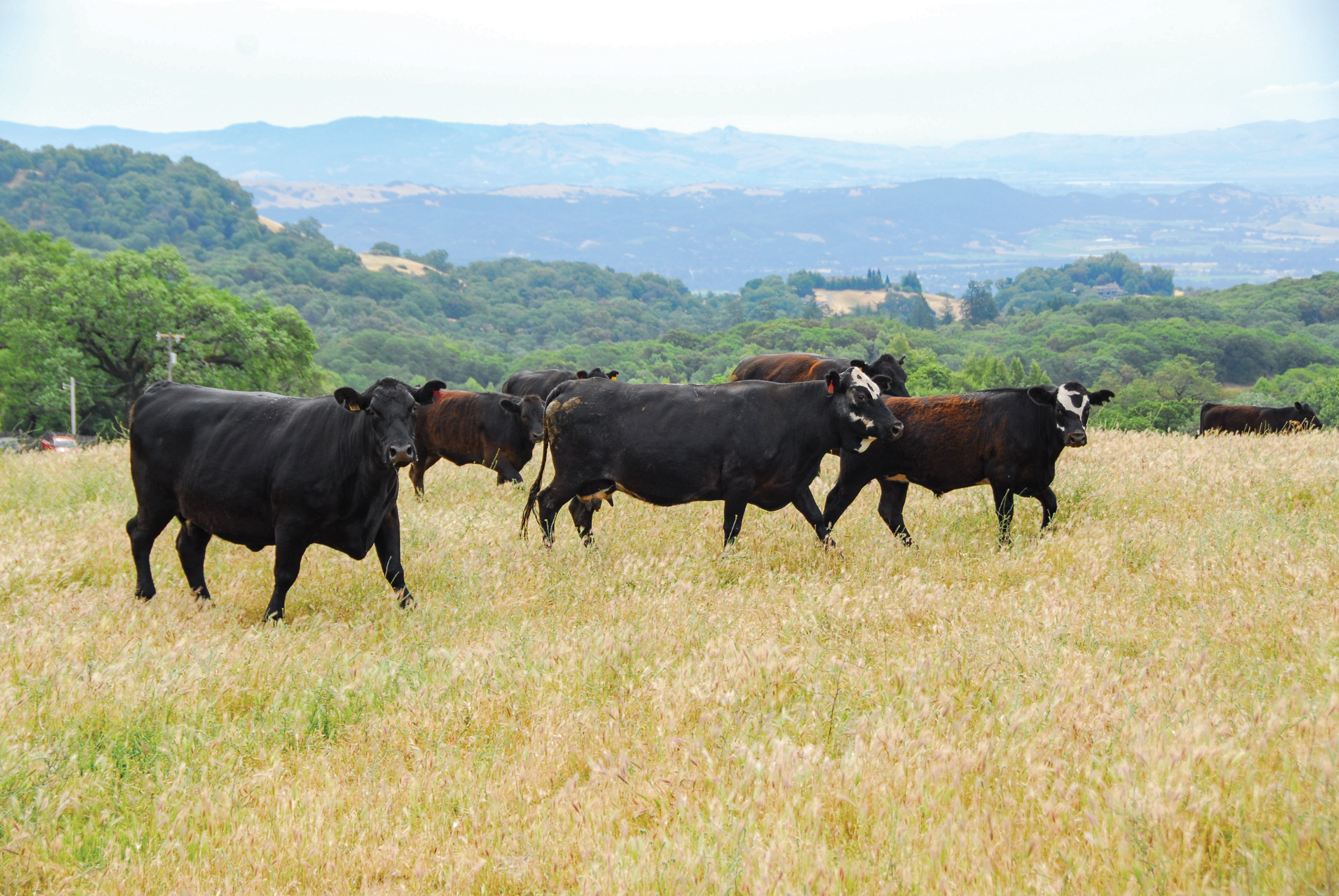Cattle grazing seen as strategic fire prevention tool


By Bob Johnson
They may not wear firefighter helmets or flameproof gear, but cows can play a vital role in managing fuels to reduce wildfires that have become more widespread and intense in the state.
A team of University of California rangeland researchers is studying how cattle grazing can strategically reduce wildfire fuel.
“Ranchers of course have many goals for the grazing, including natural resources management,” said Devii Rao, a UC Cooperative Extension livestock and natural resources advisor in San Benito County. “I think ranchers are also keenly aware that grazing is a benefit in terms of wildfire behavior.”
Rao, who has done extensive research in rangeland ecology, co-authored a UC Agriculture and Natural Resources report that examined the role cattle play in wildfire mitigation by grazing on state rangelands.
According to that report, published last September, cattle grazing in 2017 alone accounted for 11.6 billion pounds of total fuel reduction.
“Overall, this is probably a conservative estimate of fuels reduced on rangelands since it does not take into consideration fine fuels trampled by cattle and incorporated into mineral soil,” the report stated.
As cows graze, helping remove grass before it fuels wildfires, researchers are studying ways to manage that grazing to maximize fire prevention.
One factor to consider is that cattle do not eat grass down to the bare ground. “I’m not sure how much time ranchers who graze on private lands spend thinking about how to strategically graze for the maximum fire safety benefit,” Rao said. “That would be a really interesting survey to do, if it hasn’t already been done.”
Researchers say there are two key standards to consider for wildfire management. The first is how much cattle must graze to keep potential flames below 8 feet, which could allow firefighters to use equipment on the ground. A more ambitious goal is to keep the flames below 4 feet, which would allow them to use hand tools.
The amount of fuel removal needed varies by region and the results may be impacted by temperature, wind speed and humidity during fires.
For grazing to be a systematic fire-reduction tool, it is important to determine how much fuel must be removed in a particular area. That is because the rate at which grasslands grow fuel varies with the micro-climates in different regions of the state, researchers say.
In analyzing cattle grazing patterns in 2017, researchers noted that grazing helped manage over 19.4 million acres of rangeland statewide. That year, an estimated 1.8 million beef cattle grazed rangelands in California.
Researchers say grazing provided a cost-effective method of reducing fuel loads. They noted, cattle grazing is so relied upon for reducing wildfire risk that it is a common feature in regional, state, county and agency management plans.
“Since livestock grazing is already in widespread use for wildfire fuel management in California, it is important to understand in greater detail to what extent livestock reduce fuel loads across the state, including how this varies spatially,” the UC researchers wrote, adding that continued research is needed.
They also noted that more studies have been done on grazing for fuel reduction for sheep and goats than cattle.
Cattle grazing must be coordinated with other fuel management tools to optimize fire management, researchers say.
“To effectively reduce wildfire hazards, rangeland managers and planners must strategically coordinate fuel management practices, such as cattle grazing along with other natural resource objectives and management practices, including prescribed fire,” the UC researchers wrote.
They noted that “our findings suggest that land managers can help balance out these dangers in grasslands by using livestock grazing to reduce fuel loads.”
As wildfires become more common, cattle grazing must be targeted to help manage the severity of the fires. As climate change increases fire danger, the UC researchers noted in their report, “this is occurring against the backdrop of the decline of the number of beef cows grazing in California.”
Much of the grazing in the state is on public land, where policymakers could make fire prevention a high priority.
“I think it’s public land managers that are thinking more about targeted grazing for fuel reduction,” Rao said.
She said developing effective strategies is important, “especially where public lands are adjacent to or near to housing developments.”
(Bob Johnson is a reporter in Monterey County.He may be contacted at bjohn11135@gmail.com.)




